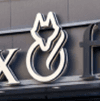AUTOMATE TIP DIVISION AND DISTRIBUTION
Employer benefits
Save over $7.5K per year in manual work
Managing tip distribution manually is costing your business valuable time and money. Whether you have a full-time or hourly team member handling spreadsheets, cash management, and tip calculations, they’re spending significant hours on tasks that could be automated. At an average of $25 per hour for 6 hours a week, that adds up to $645 per month—or $7,740 per year, per location. By automating tip distribution, your team can focus on higher-impact tasks that improve operations and boost your bottom line.
Avoid liability of over $30K per every $1M of sales
If your tip model is considered Controlled, you can be liable for CPP and EI for all tips generated.
Use our calculator to see how Controlled Tips can cost Employers over $30K per every $1M of revenue generated.
We've done the compliancy work so you don't have to
Tax compliance for tips has long been one of the most difficult and confusing, yet vitally important hurdles for small businesses to overcome.
In the age of digital tipping the CRA is pursuing tips more than ever before and it is imperative that both employers and employees have their bases covered.
Atlas Direct Tips will provide employers with the ability to nominate a tip committee of employees, customizable tip division models, all required legal agreements, automated reporting, as well as a payment solution that is compliant with CRA requirements for a direct tip system.

Atlas Tip Management brought to you in collaboration with the industry-leading experts at TaxationLawers
Employee benefits
Receive 100% of your tips
Atlas handles the entire money movement process, ensuring your tips are paid out efficiently and accurately. We collect funds from your employer and deposit your tips directly to you—no delays, no hassle.
Fair and transparent tip distribution
Tip division policies are managed by a group of employees, ensuring fairness in how tips are allocated. Atlas simplifies the entire process by automating calculations and providing clear, transparent tip reports, so every penny is accounted for, and everyone gets paid accurately.
Customized tip division for a fair & equitable model
Atlas gives you the flexibility to create a tip distribution model that works for every team member. Servers and bartenders can receive their tips daily, while back-of-house staff can pool tips across the week to balance weekday and weekend earnings. No matter how you choose to divide tips, Atlas automates the process, ensuring accuracy, transparency, and fairness for your entire team.
Exempt from CPP and EI
Direct tips are exempt from CPP and EI, giving employees the flexibility to decide how they manage their earnings. If they choose, they can contribute to CPP voluntarily, or they can keep their full tips without mandatory payroll deductions. This puts more money directly in their pockets while ensuring they have control over their financial planning.
See how Controlled Tips can cost employees 4 weeks of their annual tips.
Use calculator →
Controlled tips
Employees and employers must each contribute 7.6% of the tip amount for CPP and EI.*
The employer decides how tips are divided
The employer does not distribute tips at the end of every shift
The employer uses auto-gratuity
NOT EXEMPT
from CPP contributions and EI premiums
Direct tips
RECOMMENDED
Employees and employers are exempt from contributing to CPP and EI.
A group of employees known as a "Tip Committee" decide on the tip division model
The employer transfers tips to the committee at the end of every shift
The employer is not involved in distribution
Tips do not go on a credit card or charge card
EXEMPT
from CPP contributions and EI premiums























